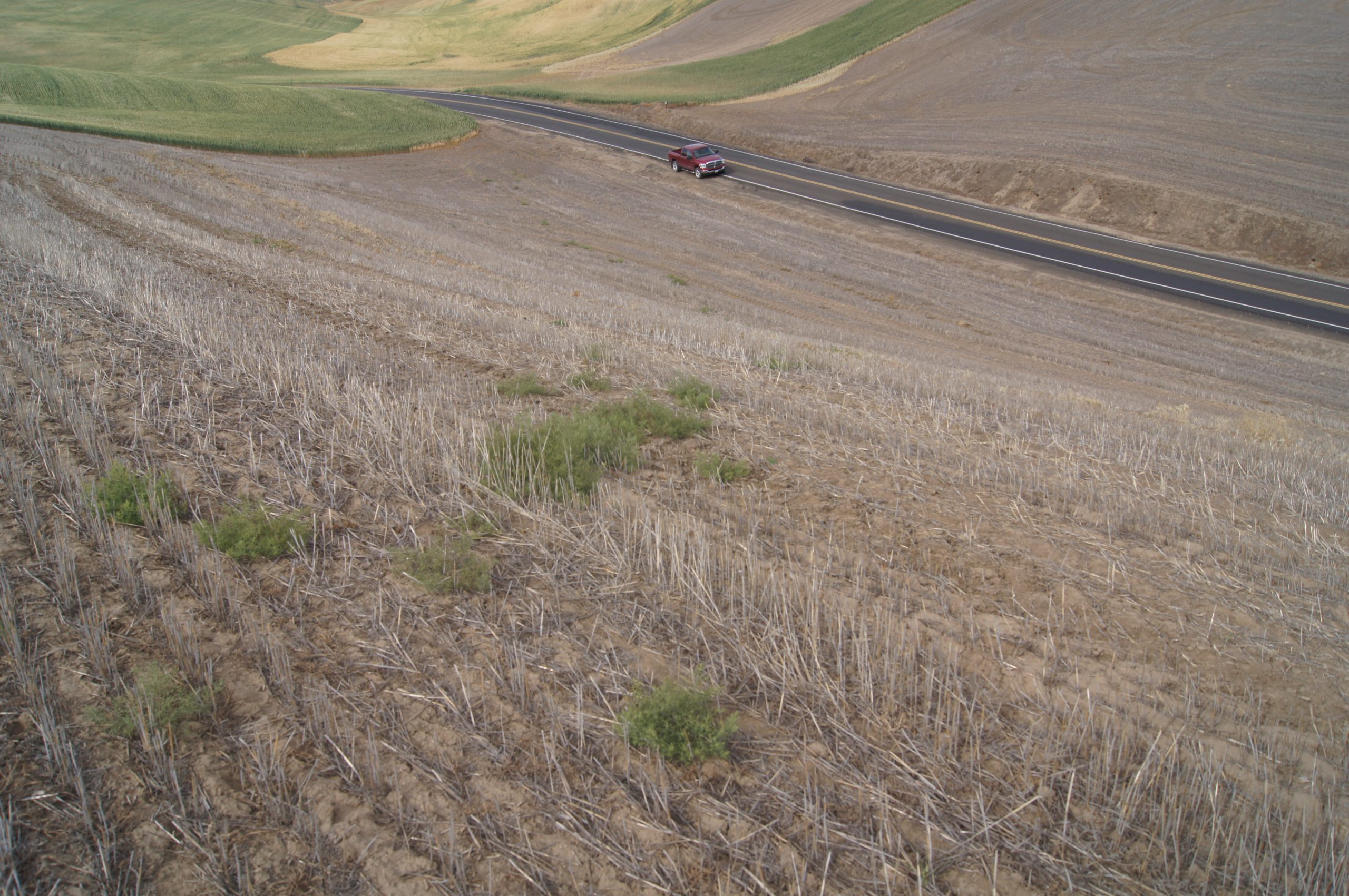Many growers are looking to the agricultural chemical and seed industries for solutions to herbicide resistance in weeds. While I do not have a crystal ball, my understanding of the problem tells me that herbicides are not the solution for herbicide-resistant weeds. Herbicides, just like antibiotics (see this great video titled, The Evolution of Bacteria on a “Mega-Plate” Petri Dish (Kishony Lab), on antibiotic resistance from Harvard Medical School), insecticides, and fungicides, all become less effective with use. Over time, their use selects for individuals (biotypes) that are more tolerant or resistant to them. While practices like rotating and mixing herbicide mechanisms of action can delay the development of herbicides resistance, it does not eliminate the selection of resistant biotypes. The only effective long-term solution to the problem of herbicide resistance is to use less herbicides, not more herbicides.
My career in weed science started in what I call the “Golden Age” of herbicides. In the 1980s and 1990s, new herbicides and herbicide mechanisms of action were plentiful. Growers had many effective herbicide options to choose from. It is not surprising that herbicides came to be the “go to” solution for weed control during this time. Unfortunately, we are no longer living in that Golden Age. The last new herbicide mechanism of action was introduced in the late 1980s, more than 30 years ago. It is my belief that we are never going back to the situation that existed in the 1980s and 1990s when we could count on the development of new herbicides to deal with our weed management issues. Those days are gone. While there will inevitably be new herbicides developed, they will be singular events. As such, they are likely to be heavily relied on, which will hasten their demise as an effective tool.
As new herbicide development has slowed to a trickle, the agricultural chemical and seed industries – many of which are merged – have invested in herbicide-resistant crop development to allow the use of existing herbicides in crops that would have previously been injured or killed by the herbicide. The latest such technology in our region is CoAXium wheat. This is a promising technology, but as I discussed in a previous WoW Blog post titled, A Word of Caution About Two New Weed Control Technologies, I fear that overuse will quickly diminish its utility. While these strategies may buy us all a little more time on the herbicide treadmill, they do not fix the underlying problem of overreliance on herbicides for weed management. All herbicides become less effective over time, and the more we use them, the more quickly their efficacy diminishes.
Sooner or later, growers are going to have to figure out how to rely less on herbicides for weed management than they have for the past 40 or 50 years. We know how to do it – Integrated Weed Management – but herbicides have been too effective and become too engrained in our production systems to convince many people to wean themselves of their near total reliance on them for weed management.
In December of 2020, several of my PNW colleagues and I published PNW754, Best Management Practices for Managing Herbicide Resistance. I challenge all growers to adopt two or more of the best management practices discussed in the publication in their farming operation in the coming year. Consider it insurance for the inevitable loss of effective herbicides.
 A trail of glyphosate-resistant Russian thistle plants in a Whitman County Washington fallow field sprayed with glyphosate. These plants developed from seed spread by a single resistant mother plant that blew across the field.
A trail of glyphosate-resistant Russian thistle plants in a Whitman County Washington fallow field sprayed with glyphosate. These plants developed from seed spread by a single resistant mother plant that blew across the field.
Not everyone agrees with my pessimistic long-term outlook on herbicides. If you have insights into a brighter herbicide future, please share them with us.